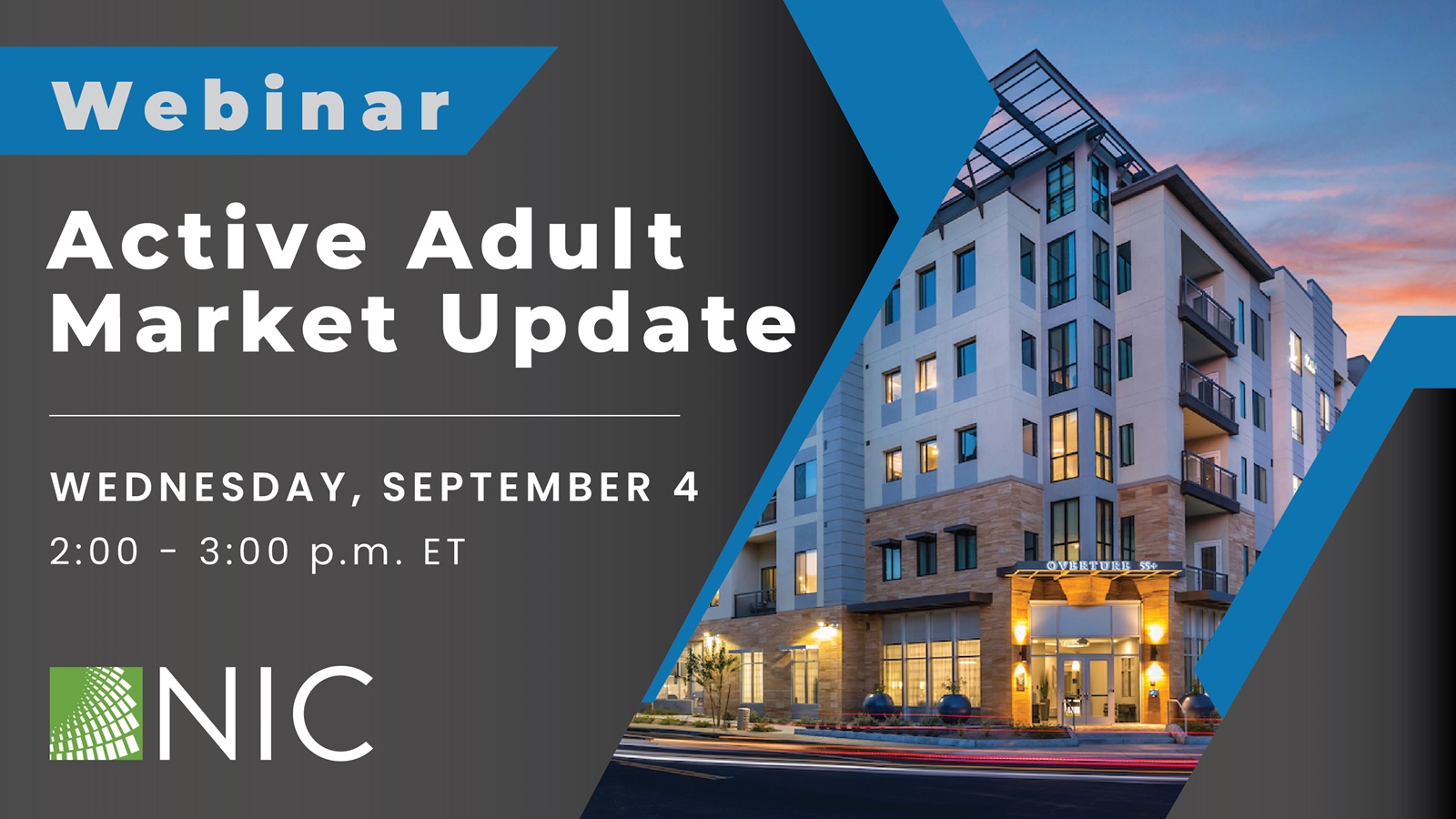More and more baby boomers are reaching age 65 and older, redefining the active adult living market.
Until recently, the term “active adult” described single-family homes for sale in a senior living community or part of a planned community. Today, people ages 65 to 74 are the fastest-growing renter demographic in the United States. Over the next decade, another 2.2 million renters aged 65 and over are expected to enter the marketThis group currently comprises over 9% of all renters (up from 6.5% in 2013) and represents an excellent opportunity for active adult property development.
Developers and operators looking to capitalize on the increasing demand for active adult rental properties benefit from certain investment characteristics. Rents tend to be higher and active adult residents tend to stay longer than residents of traditional multifamily properties. The average length of stay is six to nine years and stabilized properties typically have an annual rent retention rate of 80% (compared to 50% for traditional multifamily properties). These factors make the post-stabilization active adult segment very attractive.
Active adult rentals are designed for older Americans who want to live in a multi-family home with other residents who are generally more active than those in senior living and nursing facilities. Active adult residents seek a low-maintenance lifestyle that offers amenities and opportunities to socialize and participate in activities with like-minded older adults.
Although the definition of “active adult” continues to evolve, these characteristics share several common features:
- Age Restrictions: Properties must limit the number of residents by age. This typically means that at least one “eligible” resident in the household must be 55, 62, or 65 years of age or older, depending on the local jurisdiction.
- Multi-family housing: Communities with only single-family homes are typically excluded. However, active senior communities often include townhomes or detached single-family housing, such as row houses, villas and cottages.
- Meals Not Included: Communities do not include meals (lunch or dinner) or provide meal allowances/credits, but may offer “light dining options” such as continental breakfast or happy hours.
- Lifestyle-focused: Properties offer amenities, activities and social opportunities that allow residents to thrive.
There are some special considerations to be made when designing and filling rental properties for active adults. The sales process is very personal and takes longer than traditional multifamily housing, as seniors (and their adult children) need to thoroughly research their options.
Many operators find that a large portion of their marketing budget is spent on a strong digital presence. In addition, residents view common areas as an extension of their living space. These common areas therefore represent the second highest category of development expenditure after residential units. In operations, labor and maintenance costs are the main cost drivers, alongside marketing.
In terms of location, the Sunbelt is no longer number one for older renters. Cities in the Midwest and Northeast — including Providence, Rhode Island, the New York-Newark metropolitan area, Cleveland, Buffalo, New York, Pittsburgh and Detroit — are among those where renters age 55 and older make up a significant share (25-30%) of renter households. Honolulu, New Orleans and Baltimore round out the list.
Meanwhile, Dallas, Los Angeles, New York, Minneapolis and Houston are currently in the markets with the highest demand for adult rental housing.
To learn more about trends in the active adult market, the National Investment Center for Seniors Housing and Care (NIC)* is hosting a free webinar on September 4 at 2 p.m. EDT. Learn more and register. The segment will also be a focus topic at the NIC Fall 2024 Conference in Washington, DC.
*About the National Investment Center for Seniors Housing and Care (NIC)

